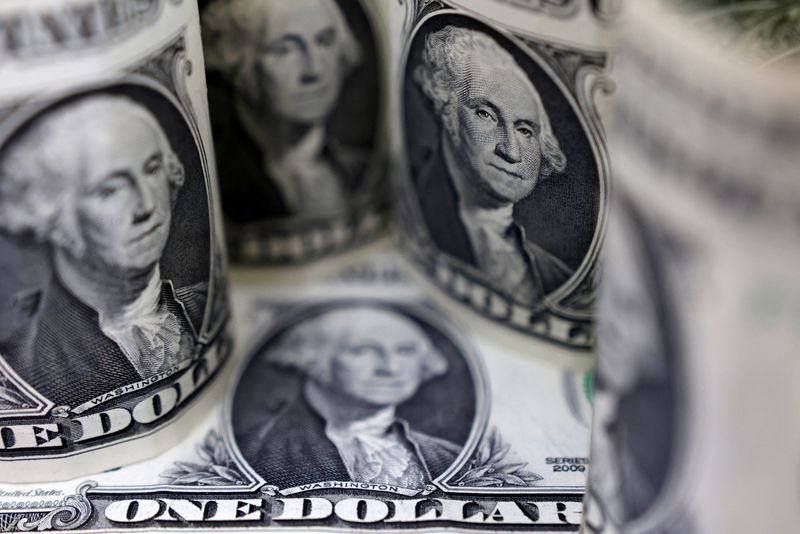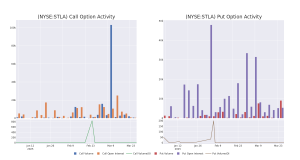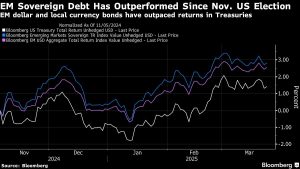
By Karen Brettell
NEW YORK (Reuters) -The dollar jumped to multi-week highs against the euro and yen on Monday after data showed U.S. business activity picked up in March and reports that U.S. President Donald Trump will be flexible with upcoming tariffs.
In cryptocurrencies, bitcoin was also bolstered by improving risk sentiment and reached $88,772, the highest since March 7.
S&P Global’s flash U.S. Composite PMI Output Index, which tracks the manufacturing and services sectors, increased to 53.5 this month from 51.6 in February. A reading above 50 indicates expansion in the private sector.
The services sector accounted for the rise in the PMI, partly attributed to a thaw in temperatures as spring sets in. Manufacturing slid back into contraction territory after two straight months of growth.
“Overall, the services side is a much more important component of the U.S. economy so I take this as good news,” said Adam Button, chief currency analyst at ForexLive in Toronto.
The greenback also rose against the Japanese yen earlier on Monday after Bloomberg News and the Wall Street Journal reported that the Trump administration was likely to exclude a set of sector-specific tariffs while applying reciprocal levies on April 2.
Trump said on Monday he will in the very near future announce tariffs on automobiles, aluminum and pharmaceuticals.
“Everyone was initially shocked by the scope and size of tariff talk, but lately markets are taking a more measured view,” Button said.
The dollar was last up 0.82% on the day against the Japanese currency at 150.54 yen. It earlier reached 150.75, the highest since March 3. The currency pair moved in sync with rising Treasury yields, with 10-year yields gaining 8.3 basis points on the day to 4.335%.
“A wave of cautious optimism is washing across foreign exchange markets on hopes that next week’s U.S. tariff announcement will prove less extreme than had previously been feared,” said Karl Schamotta, chief market strategist at Corpay in Toronto.
That said, “traders are avoiding big directional positions, given that the U.S. administration’s tariff plans are still likely to touch off another round of retaliatory strikes from major trading partners – damaging the U.S. and global economies, and triggering more turbulence in currency markets. Volatility levels look likely to remain elevated,” Schamotta said.
The dollar has been under pressure for most of this year as the market’s assumptions that Trump would quickly usher in pro-growth policies transformed into worries about the implementation and ultimate impact of trade levies.


